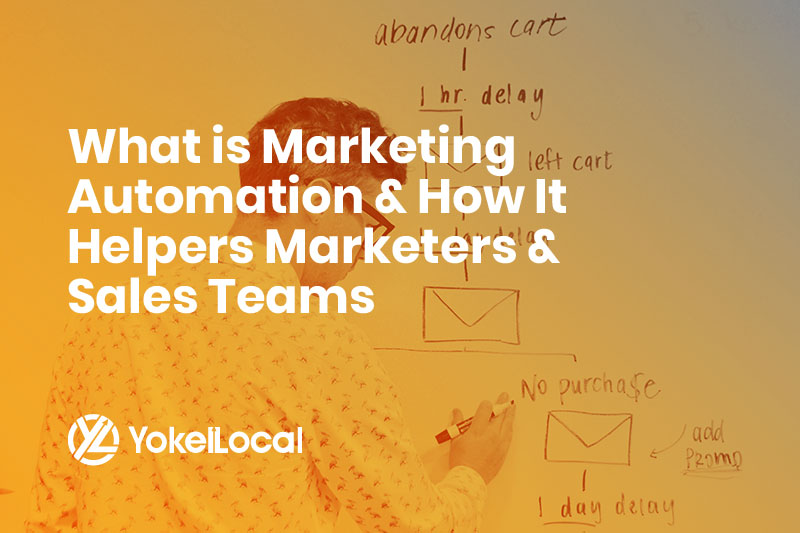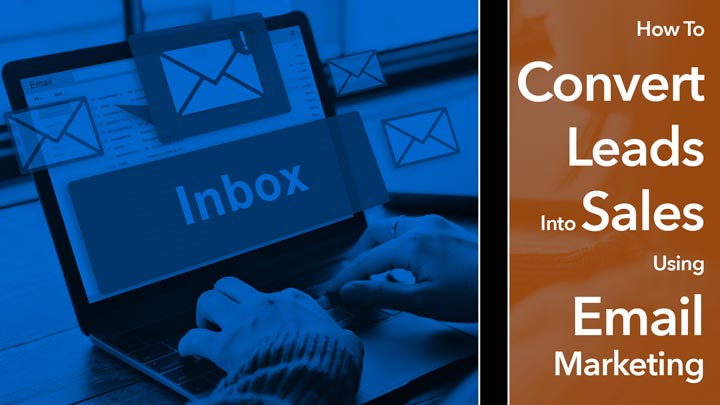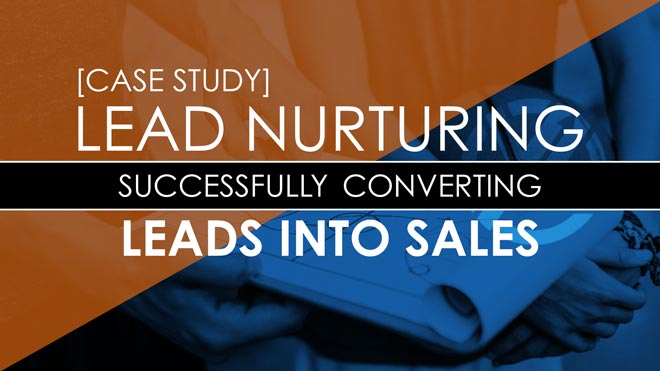Marketing automation is a hot topic for discussion among marketers, but what is it and how can it benefit your business? Companies today have more potential touch points with customers, and turning each one into a valuable experience is a challenge. Marketing automation helps businesses do this by streamlining simple, repetitive processes in each interaction, such as sending an e-mail or collecting contact information. When properly applied, marketing automation can help your business better connect with customers, improve the quality of your leads, and increase sales.
What Is Marketing Automation?
Marketing automation refers to the process of making marketing decisions by automating routine tasks and workflows across the customer lifecycle. There are nearly limitless opportunities for automation, but it’s especially useful for identifying, scoring, and nurturing leads with email marketing workflows.
Marketing automation can increase the volume of leads you move through the customer life cycle. It also allows you to focus on higher-value interactions, which can improve the overall quality of customer service. When successfully implemented, marketing automation can increase sales, streamline operations, and improve the customer experience.
Examples of Marketing Automation
- Auto-responders: Someone opts in to an offer on the website, and that automatically triggers an email response.
- Email workflows: Users that meet certain criteria get enrolled into an automatic email sequence (where you never have to press the send button).
- Contact list management: Users can be categorized based on information that's gathered about them. e.g. If they convert, you can change their status as a lead to a customer.
- Lead scoring: Your sales team can be notified about contacts with the highest possibility for conversion determined by automation and a set of defined criteria.
How Does Marketing Automation Work?
Marketing automation typically works by pairing with customer relationship management (CRM) software that gathers data about customers and users of your website. A marketing automation platform can help to segment users based on different criteria that corresponds to their position in the customer life cycle. Your marketing automation software can then guide leads to a trail of landing pages, e-mails, content offers, and more once they engage in a triggering action (such as by clicking a link on social media). This can help your marketing team nurture more potential leads than they could if they had to do all of these tasks manually.
Why Use Marketing Automation?
Marketing automation streamlines your marketing team’s workload to increase the number and quality of your customer interactions. With marketing automation, you can easily identify where prospective leads are in the customer lifecycle and tailor your content offerings to nurture them toward a purchase decision. You can also engage with current, prospective, and past customers across social media, e-mail, and even automated live chats. It can also help you to measure the ROI of each aspect of your marketing campaigns, allowing you to make changes as necessary.
How Do I Start Using Marketing Automation?
In order to successfully implement marketing automation in your business, you’ll want to carefully identify areas of improvement and the technologies that are most appropriate to your needs.
1. Outline Your Current Lead Generation and Sales Process
The first step to adopting marketing automation is to identify each step in your lead generation and sales process. By doing this, you’ll know which actions require a human presence, such as interfacing with customers, and which don’t, such as sending emails after a triggering event. Marketing automation tools are meant to automate repetitive tasks, and with an overview of both processes, you’ll have a better idea where to implement them. You can also find out how much time your marketing team is spending on each task and identify priorities for automation.
2. Identify Gaps in Your Strategy
Once you’ve taken inventory of your lead generation and sales processes, you can identify your current pain points and gaps in your existing marketing strategies.
“I wish we had a process for nurturing leads.”
You may want capabilities you don’t have, such as a simple process for nurturing leads or for keeping in touch with past customers. You may also find your marketing team is spending too much time on low-value tasks, such as lead qualification or sending emails.
3. Learn About Marketing Automation Tools and Their Capabilities
Before making an effective campaign using marketing automation, it’s important to fully understand what tools are available to you on which platforms. Some marketing automation systems offer a high level of personalization capabilities. Knowing how such software works can only open your mind to the possibilities of automating some of your marketing processes.
Marketing automation can be used for drip email marketing campaigns, managing leads (whether you need to segment or score them), and alerting your sales team to opportunities in real-time. These platforms also offer powerful analytics tools, giving you the information you need to refine your marketing efforts.
4. Identify Manual Actions That Could Be Easily Automated
When looking for manual actions to automate, you may want to ask what happens if a client engages in a triggering action. When they fill out a form or opt into an offer on your website, your sales team may have to manually send out responses, which can be a slow process that has plenty of room for error.
Based on the technology, what triggering actions could lead into an automated action that would replace manual work?
“What should happen if someone opts in on the website?”
“How can I make this mass email more personalized?”
Much of the work required to use your sales enablement capabilities after a triggering action can be automated, such as sending a follow-up email or personalizing your responses. By doing this in real-time, you can keep customers engaged with your business and move more leads closer to a purchase decision.
5. Get a Demo
Before fully committing to a marketing automation platform for your business, you may want to try a demo first. Some platforms may be better suited to the type of work you need automated or are easier for your marketing to integrate into their workflows. You may find that one platform integrates with necessary tools more effectively than another.
By experimenting with your platform, you can also ask the company you choose questions such as what level of training and support they offer or how you can integrate your automation platform with your CRM. You can also discover that the platform you are using is missing features you find out you need but which may be added in through customization.
6. Start By Creating a Small Workflow and Go From There
Marketing automation tools can be a powerful aid, but if you introduce them without making sufficient preparations, you could sow confusion among your customers and marketing team. To avoid this, start by automating a few simple tasks instead of everything at once. By progressively scaling your automation efforts, you can make changes in your existing workflows, which in turn may change your automation needs.
Marketing Automation Roadmap
By successfully implementing a marketing automation program, you can improve the quality of your leads and increase sales while reducing inefficiencies throughout your lead generation and sales process. Marketing automation is not a replacement for your marketing team, but is a tool that can enhance its effectiveness. Ultimately, it allows them to focus their efforts on high-value customer interactions, letting them increase sales while improving the overall customer service experience. Download our marketing automation roadmap to find the best ways to use automation to improve your business.













